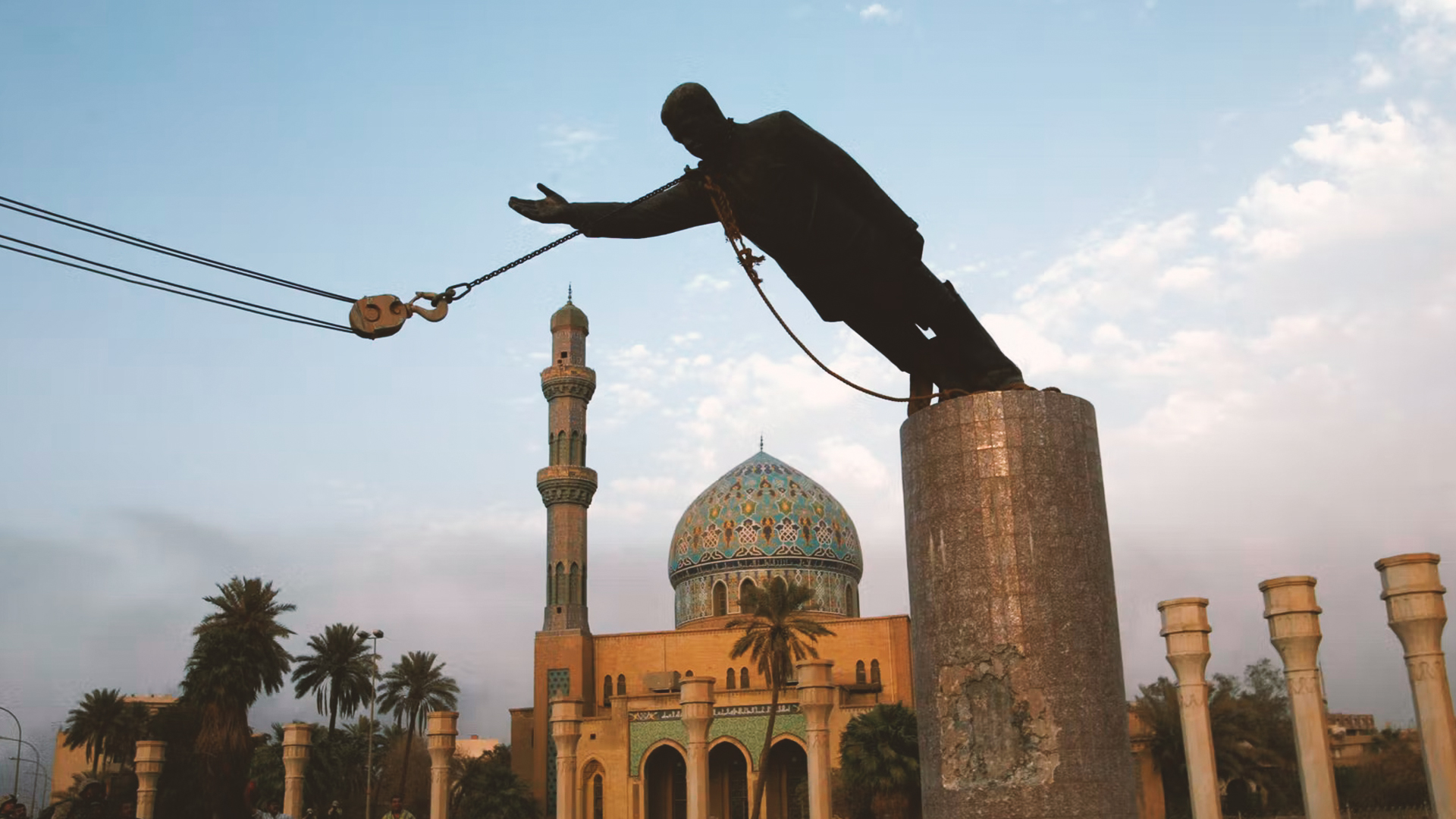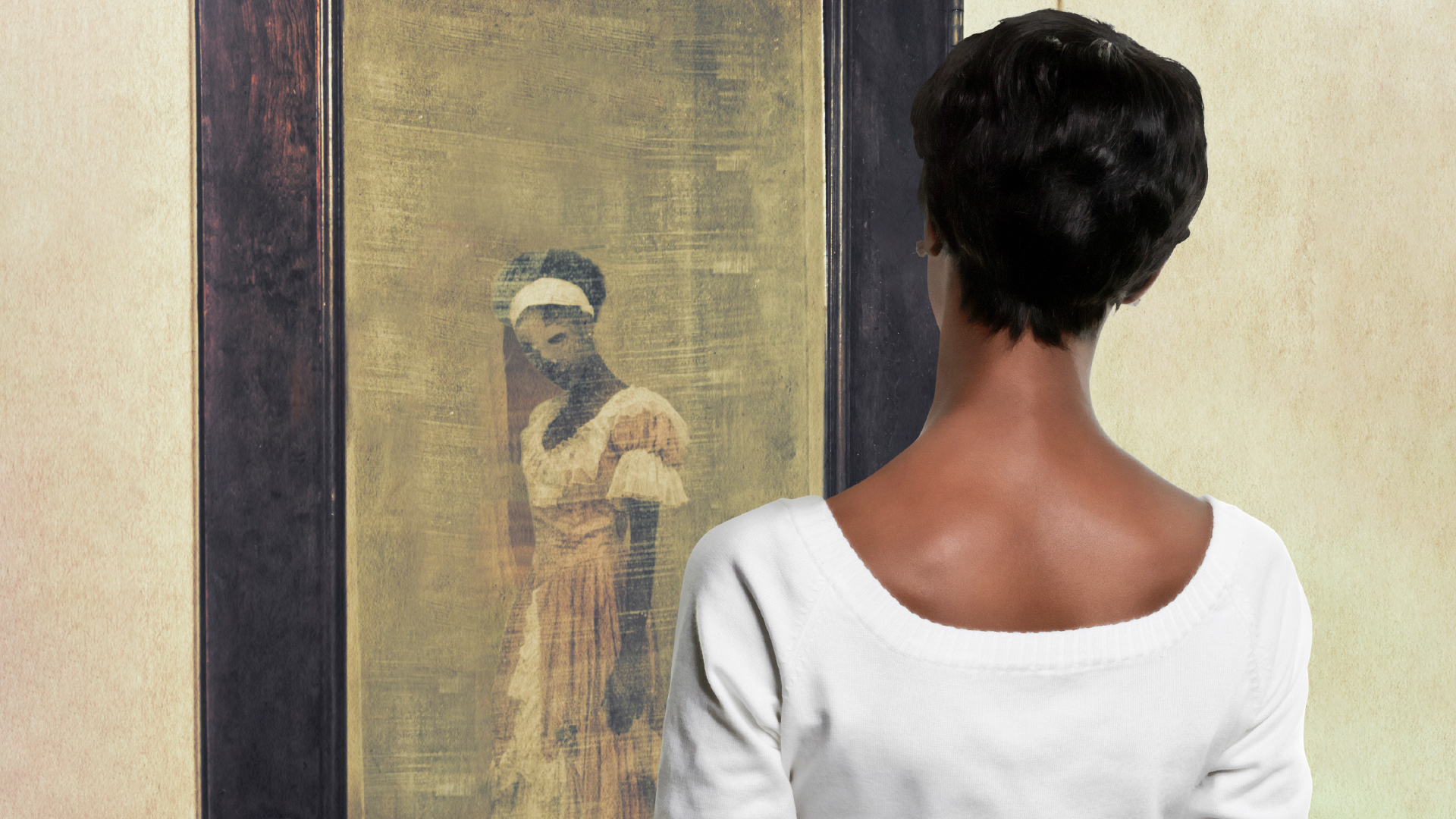When We Talk About Statues . . .
What Are We Really Talking About?
Why do people erect statues and other monuments? And why do others want to tear them down?
To be called iconic is today a peak of achievement. Combining resonances from old religious imagery, memorials, and modern computer terminology, the word has struck a fresh chord in the 21st century. Celebrities, historical figures, fashion items, furniture designs and marketing brands have all attracted, or aspired to attract, the label.
The word derives from ancient Greek, but this particular usage is much younger, dating to the mid-20th century. Its current vogue overlaps with renewed focus, perhaps not coincidentally, on a particular sort of icon: statues and monuments.
Such objects have existed across the world for millennia. Some are figurative, representing a value or abstract entity, while others are more specific, often in celebration of a particular person. Some were erected in self-celebration, some to honor another.
Their purpose has rarely been more scrutinized than in recent years, however, with an ongoing debate about our view of history playing out along political and cultural lines.
“We live in an era when people question the symbols of the past with increasing frequency.”
Some of this scrutiny has led to direct action: The removal of American Confederate general Robert E. Lee’s statue in New Orleans in 2017 presaged the same fate for others—over a hundred Confederate public symbols in 2020 alone. In the United Kingdom, merchant and slave trader Edward Colston’s statue in Bristol was likewise toppled in 2020. And since the dissolution of the Soviet Union in 1991, nations across eastern and central Europe have been dismantling Soviet-era memorials to the USSR’s victory over Nazi Germany. That effort picked up momentum after Russia’s invasion of Ukraine in February 2022. Latvia and Estonia alone plan to destroy or relocate hundreds of such memorials, citing not only Moscow’s current aggression in Ukraine but decades of Soviet occupation in the Baltic region, of which the monuments are constant reminders.
Ours is a world that has broad access to knowledge and that is eager to reassess certain aspects of the past according to new information and changing values. This produces inevitable conflict when applied to seemingly immutable statues and monuments, because nearly all are erected with the expectation that what they represent will remain valued forever. But both ancient history and recent events show that belief to be naive. In the intensity of debate it’s easy to forget that each of these objects is in essence a mere chunk of rock or metal. Even so, the conversation itself is much more significant than we perhaps realize.
Stepping back from a blinkered focus on the present and seeking perspective in the historical record offers helpful context as we think about these issues. It’s worth asking the question: What are we really talking about when we talk about statues?
Statues, Then and Now
What do we mean by statue, or monument? Does it include sculptures more generally—animals, allegorical figures, even abstract ideas? Does Michelangelo’s David qualify in the same way as the stone heads found on Easter Island? Is the seven-tonne figure of Rameses II more of a statue than the small sculpted model of four cows found in Egypt from two millennia before? Does the type of material—wood, marble, bronze, clay, concrete—matter?
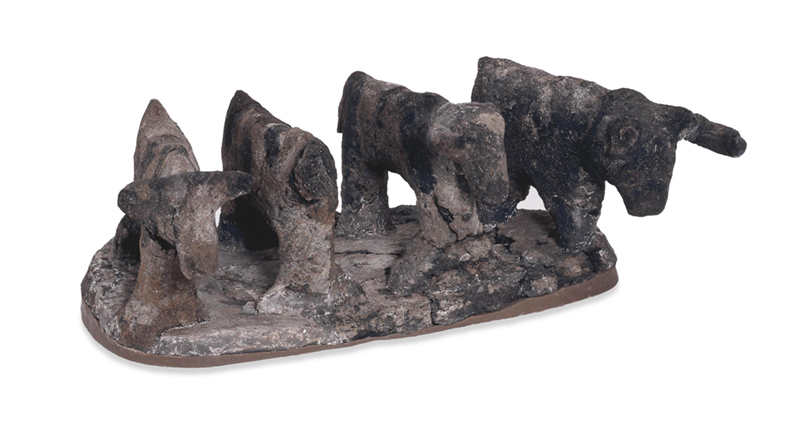
A fired clay model of four cows, ca. 3500 BCE, excavated at el-Amra, Upper Egypt.
Photo courtesy British Museum under Creative Commons license; ©The Trustees of the British Museum
Humans have produced an enormous number and variety of three-dimensional carvings and casts for a multitude of purposes over thousands of years. Some purposes are harder to identify than others. Historical sources regarding a piece’s intended function aren’t always clear, or even present. But even when they are clear, the original intent, the size, the identity of the sculptor and the material used aren’t necessarily the most important factors.
More significant is the longevity of the materials used. These objects are rarely made of impermanent substances. Whether stone, metal, clay, concrete or wood, they are intended to last a long time. Implicitly, then, they signify something that is highly valued and that will (it is presumed) retain that value long past the life of the creator.
For many older civilizations, statuary served a religious purpose. Hebrew Scripture tells of animalistic statues built for pagan worship, such as the half-human, half-fish Philistine god Dagon. The book of Daniel tells of an enormous gold statue built by Babylonian king Nebuchadnezzar, reaching to 27 meters in height.
“In the whole of the ancient Near East, art was inseparable from religion and without it would have found little inspiration.”
Many people in what we now call the Middle East kept smaller statues of divinities in their homes for private worship. The multiple Buddha and Jina figures found in South Asia were similarly used, and continue to be so today. People use the figure of Buddha as a means of meditation to achieve a desired state of mind. And some branches of Christianity keep statues and statuettes of Jesus, Mary and others for public and private veneration.
When it comes to ancient statuary, most think first of Greece and Rome. The Greeks, according to French archaeologist Philippe Bruneau, “really did consider sculpture to be an outstanding feature of their civilization.” It mostly took human form and almost always served a religious purpose. Bruneau observes that they “were hardly ever uncommissioned work made solely for aesthetic reasons of the kind that we now call art.” A statue of a god, for instance, was often erected in its temple, thereby securing the divine presence and consequently its protection over the local area. Indeed, some very old Greek statues were sculpted without feet to ensure that the god couldn’t leave.
Ancient Egypt used statues for worship as well as for funerary purposes. Frequently, though, Egyptian monumental art performed what seem to be more modern functions. According to British archaeologist Seton Lloyd, such works often acted as “‘reminders’ of historical events,” serving an educational purpose as well as supporting the existing leadership. This (inevitably biased) celebration of leaders and their achievements, intended to establish and reinforce public values, anticipated what would become de rigueur from the 18th century onward.
The Renaissance, meanwhile, looked to recreate the beauty of classical Greek and Roman sculpture, increasingly for the delight of art itself. In the era’s determination to center the universe around man, statues largely lost religious functionality, though they often remained fixed on biblical themes. But the rising centrality of man was unmistakable. Artists became figures (in modern parlance, “iconic”) in themselves, with the likes of Michelangelo and Donatello retaining their fame to this day.
In ensuing centuries in Europe, statues and other monuments increasingly became a public demonstration of political strength: “Art is the favourite instrument of power,” art historian Geneviève Bresc-Bautier writes. Growing self-confidence in 19th-century Europe contributed to an explosion of statue-building in honor of current and historical figures. Statuary’s relation to history, a key aspect of the current debate, was now firmly entrenched.
And here we find the essential weakness. As a discipline, history ideally rests on a foundation of facts, but it is always subject to bias, perspective and new discoveries. Failing to recognize this, people attempted to immortalize their version of history in an inert object, with the certainty that what they saw in it would remain relevant. The folly of that kind of pride, that trust in their own understanding, is exemplified in legions of grand (though now largely ignored) statues from this period dotted around the world.
Changing Significance
The tomb of an eighth-century Chinese general is a brilliant example of how statues can represent different things to different people. Liu Tingxun filled his tomb with, among other items, 13 ceramic figures ranging from 60 to 110 centimeters tall (ca. 25–40 inches). These statuettes were intended to protect the tomb and convey his accomplishments to others in the afterlife. Combined with a self-celebratory written obituary, they presented a spectacular impression of the general’s life. As historian Neil MacGregor writes, the figures represented his ticket to the other side, addressed to “the judges of the Underworld, who would recognize his rank and his abilities and award him the prestigious place among the dead that was his due.”
“Together, figures and text give us an intriguing glimpse of China 1,300 years ago; but, above all, they are a shamelessly barefaced bid for everlasting admiration and applause.”
For us in the West, the figures bear a different significance. They are historical artifacts, offering us a peek not only at Liu Tingxun but at the Tang Dynasty, a national golden age when Chinese civilization outstripped most of the rest of the world. For many modern-day Chinese, the statues mean even more, standing as evidence of a peak of national achievement.
The meanings we attach to objects change over time. They also differ from individual to individual and from society to society. Many meanings and perspectives can exist simultaneously; but the variety and mutability of opinion pose a problem when held up to the cold, hard exterior of a monument.
The Current Debate
The statues that have lately received attention are of a more recent vintage. Edward Colston and Robert E. Lee were lauded for values that seemed eternal to those who erected their statues. But Colston and Lee were human, with inevitable complexities, and so their lives could never be fully represented by an inert statue. “One of the problems with figurative monuments and memorials,” Lowe writes, is that “they often simplify history too much. In the pursuit of a single, dramatic story about our past, they can obscure other, more nuanced stories.” What the memorials to Colston and Lee left out—most particularly their legacies in relation to race and racism—is the core of the objection for 21st-century audiences.
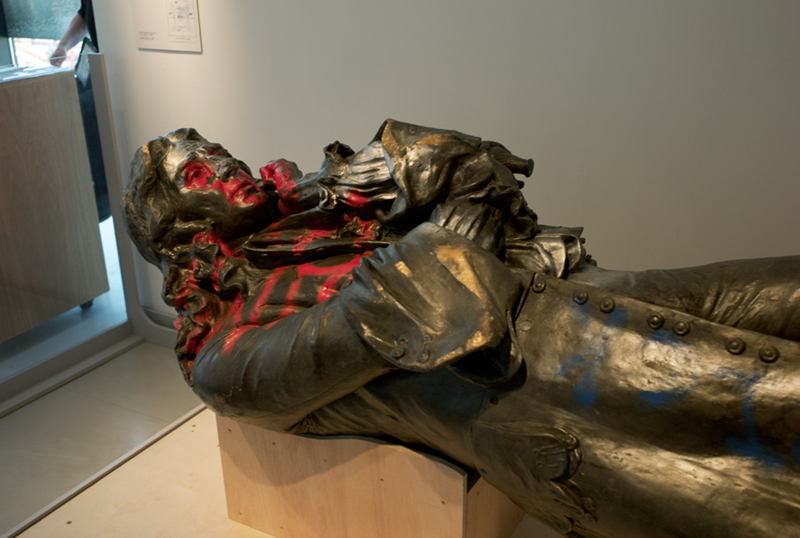
The defaced statue of British philanthropist and slave-trader Edward Colston lies on display at the M Shed in Bristol, England, having been torn down by protesters on June 7, 2020.
Photo: Adrian Boliston, CC BY 2.0, via Wikimedia Commons
Understanding what a monument is, and is not, is an important first step for us all. It is, in essence, a chunk of rock or other material. From its inception, it attracts interpretations and meanings that might be individually or publicly shared. It often celebrates, or honors, a person or virtue or idea. The parallel with the modern concept of an icon is clear; but where iconic associations with a celebrity or brand are malleable, often complex, and temporary, a monument is inert, simplistic and long-lasting. And when that monument or statue memorializes a particular person or event, its meaning can be at significant odds with the source material.
Clashes of interpretation present a challenge for us all. It’s crucial that we consider what we’re investing in such memorials, whether it’s really that important, and how we go about expressing that to others.
A statue is often a monument to human achievement, a legacy intended to exist beyond death. The urge to establish a legacy that lives beyond us is strong. It’s manifested in art, charitable bestowals, inheritances, and even the achievements of our children. It’s a sentiment many of us share, and it makes the destruction of that legacy (even if it isn’t our own) especially brutal, gut-punching.
This is not just applicable to statues, however. Buildings, pyramids, temples, and other structures such as the Taj Mahal, Big Ben or the Benin Bronzes are in a sense a part of a collective human identity. This is partly why so many mourned when the Cathédrale Notre-Dame de Paris burned, or when ancient buildings were destroyed during the Syrian Civil War, even though many had never seen these places in person.
That said, a statue is not, despite what some have claimed, history itself. As historian Alex von Tunzelmann writes, it is “not a record of history but of historical memory.” That is, it records how its creators thought a person should be remembered, not who that person really was. The destruction of a statue does not erase or destroy history in any sense of those terms; if anything, it adds another chapter to a continuing story. The historical record remains, whether the monument does or not.
Still, there’s a current idea that old things ought to be preserved because they are old. In a society dominated by disposables, where capitalism rewards those who manufacture items with limited lifespans, it’s natural to hanker after the seeming permanence of yesteryear. But that’s quite a modern idea. Applying this principle to statues, some politicians have called for a “retain and explain” policy, which preserves them with additional signage explaining the wider picture. While there is perhaps merit in this, it also feels like a solution that primarily seeks to appease voters on both sides of the argument.
Should monuments be preserved just because they’re old? It’s a question worth thinking about, and it’s also worth noting that their removal and destruction is not a new thing. A statue of Lenin in Kyiv was only one of the most prominent to fall in post-Soviet Ukraine; Iraqi premier Saddam Hussein’s statue in Baghdad was pulled down in 2003; Belgian king Leopold II’s figure in Kinshasa was removed, twice, in 1966 and again in 2005; following World War II, hundreds of Nazi statues were removed or destroyed in Germany; the London statue of William, Duke of Cumberland, came down in 1868; and in the then-province of New York, King George III’s statue lasted just six years before it was decapitated and defaced in 1776. That’s to say nothing of the countless monuments over the centuries that have been defaced or destroyed by hostile armies, or those more benignly removed to museums or other public spaces.
Each of these memorials was removed for strongly felt reasons. But ultimately what’s important, setting aside artistic considerations, is not really the object itself. “Putting a statue up is a powerful symbol. So is pulling one down,” as von Tunzelmann says. In each case it’s about what we value.
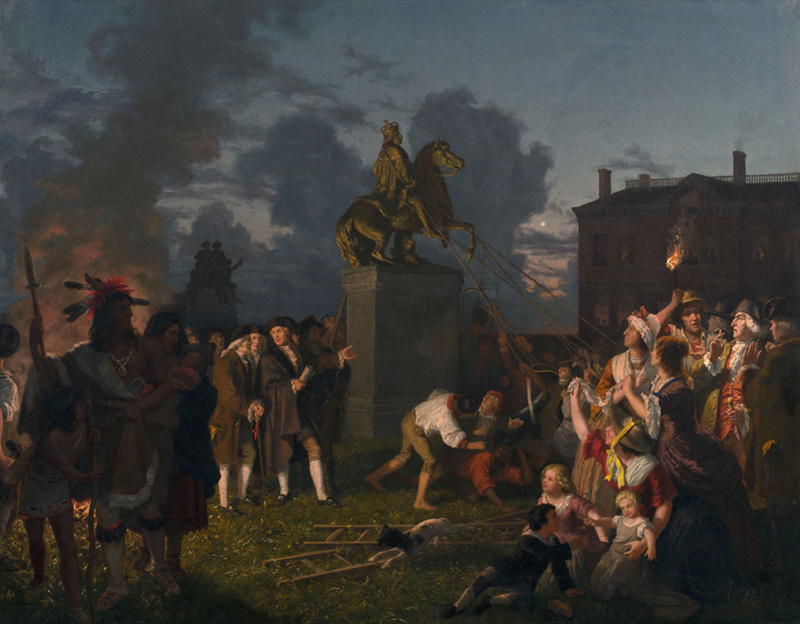
Pulling Down the Statue of King George III, N.Y.C. by Johannes Adam Simon Oertel (ca. 1852). Working decades after the event, the German-American painter/cleric depicted an imagined, romanticized version of the July 9, 1776, scene. Eyewitness accounts don’t support the presence of Native Americans, women and children at the event; and historical records indicate that the statue depicted the king dressed as a Roman emperor rather than in contemporary clothing.
The Why and the How
When it comes to monuments, two factors are at play: the reasons for erection or removal, and the way it’s done. The latter is perhaps less thoroughly examined but is important nevertheless. For example, commissioning a statue celebrating oneself—former president of the Dominican Republic Rafael Trujillo, by the time of his death in 1961, had commissioned 1,800 publicly funded statues and busts of himself—is a clear abuse of power and an example of poor leadership. On the other side, the aggression, finger-pointing and division often in evidence during the reassessment of a statue can obscure and damage underlying good intentions. Acting badly in pursuit of good values has the effect of undermining the values themselves.
“When we defend any particular statue, what are we really defending?”
Statues, whether still standing or not, are a testimony to humanity’s thinking over the millennia. “Monuments reflect our values, and every society deceives itself that its values are eternal,” as Lowe writes. The record of that self-deception is found on old plinths the world over. Those that today seem irrelevant, or offensive, are a reminder that human societies have frequently adopted and celebrated ideas and values that have been found wanting. The ideas of the ancient Egyptians, for instance, despite their extraordinary constructions, have largely not stood the test of time. We no longer feel sacrificing other humans (including children) to stone statues, as a number of ancient cultures did, is beneficial. Even values widely celebrated a century ago seem to have passed their sell-by date.
The track record of human ideas is such that we can be sure the same will be said about values popularly held today. That said, dependable principles that serve all of humanity are a desirable thing; the search for them can be traced throughout history.
Statues are, in essence, no more than a chunk of metal or rock. But the meaning we invest in them is important; it strikes at the heart of our identity. “Statues of historical figures,” von Tunzelmann writes, “have sway in this debate because they tap in to all those binaries that are not really about history at all, but are about how we see ourselves reflected in history: pride versus shame, good versus bad, heroes versus villains.”
Lowe adds: “The debates currently taking place over our monuments are almost always about identity.” That is, it’s about us: how we think, how we act, and who we are. We may think we’re talking about statues, or an abstract concept of history, but we’re really talking about us. That is what requires paramount scrutiny. A statue or other monument may represent an idea that at first seems appealing but that turns out to have faulty foundations. It’s worth thinking about what kind of values we stand for, whether they are actually beneficial to us and to others, and whether they’re worth immortalizing in a physical object.

